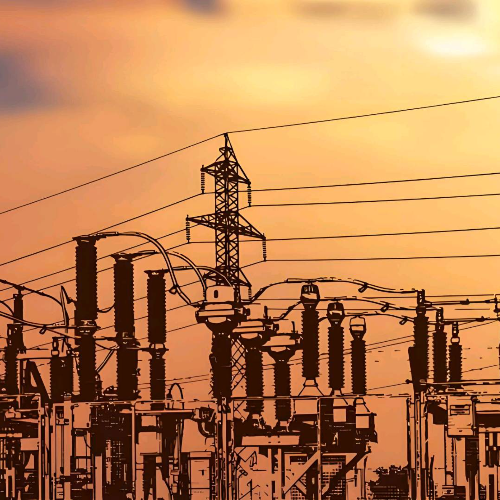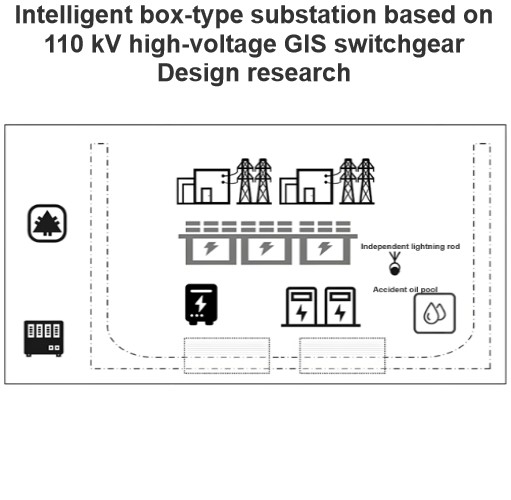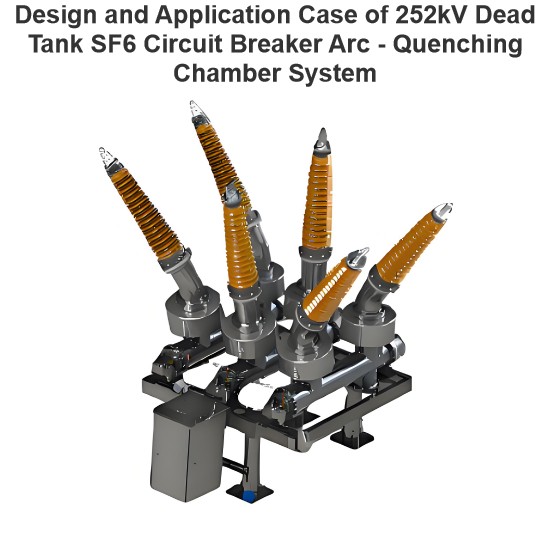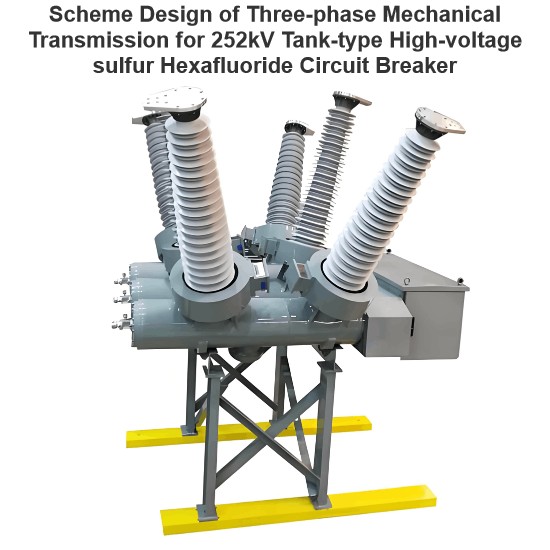Standards and Classification of Combined Power Distribution Devices
There is a relatively large variety of combined power distribution devices. Commonly used ones include packaged substations, box - type transformers, pre - assembled substations, combined transformers, European - style box substations, and American - style box substations.
Relevant Standards for Combined Power Distribution Devices
The currently effective relevant standards for combined power distribution devices in China mainly include: the national standard GB/T 17467 - 1998 High - voltage/Low - voltage Prefabricated Substations, the mechanical industry standard JB/T 10217 - 2000 Combined Transformers, and the power industry's ordering standard DL/T 537 - 2002 Selection Guidelines for High - voltage/Low - voltage Prefabricated Box - type Substations.
In 1995, the International Electrotechnical Commission (IEC) published the standard IEC1330 - 1995 High - voltage/Low - voltage Prefabricated Substations. The national standard GB/T 17467 - 1998 High - voltage/Low - voltage Prefabricated Substations is equivalent to the IEC1330 standard. In this standard, a prefabricated substation is defined as "equipment that has passed type tests and is used to transmit electrical energy from a high - voltage system to a low - voltage system. It includes transformers, low - voltage and high - voltage switchgear, connection lines, and auxiliary equipment enclosed in a casing".
The mechanical industry standard JB/T 10217 - 2000 Combined Transformers states that the standard definition of a combined transformer is: "a transformer that combines the transformer body, switchgear, fuses, tap - changers, and corresponding auxiliary equipment".
The power industry's ordering standard DL/T 537 - 2002 Selection Guidelines for High - voltage/Low - voltage Prefabricated Box - type Substations revised the original DL/T 537 - 1993 Technical Conditions for Ordering 6 - 35kV Box - type Substations, making the power industry standard for box - type substations consistent with IEC 1330 - 1995. The differences between DL/T 537 - 2002 and IEC 1330 - 1995 (i.e., GB/T 17467 - 1998) are shown in Table 1.
The above three domestic standards are all recommended standards. Due to the different characteristics of various industries, each standard has its own unique features. The power industry's ordering standard is considered from the user's perspective, based on international (national) standards, and adds the content introduced in Table 1, providing a more detailed basis for equipment selection.
Classification of Combined Power Distribution Devices
Despite the above - mentioned standards, the naming of combined power distribution devices in practical applications is not very uniform, and the classification also varies. There are mainly two categories: one is to define pre - assembled substations only as European - style box substations; the other is to collectively call all combined power distribution devices pre - assembled substations, and then divide pre - assembled substations into "European - style box substations" and "American - style box substations". Some suppliers, in order to meet the needs of different users, even have a product with two names.
Structure and Performance Analysis
European-style Prefabricated Substation
In the 1970s, China imported 6-10kV integrated power distribution equipment from European countries such as France and Germany. This innovative equipment integrated the three main components of a substation (high-voltage switchgear, transformer, and low-voltage distribution cabinet) into a single enclosure, establishing the concept of a prefabricated substation.
In December 1993, the former Ministry of Electric Power released the industry standard DL/T 537-1993 "Technical Specifications for 6-35kV Prefabricated Substations". Article 3.1 of this standard explicitly defines: "A compact complete power distribution assembly consisting of high-voltage distribution equipment, power transformers, low-voltage distribution equipment, and electric energy metering devices enclosed in one or multiple cabinets shall be termed as a prefabricated substation, abbreviated as cabinet-type substation." Originating from European designs, this configuration became commonly known as the European-style prefabricated substation.
Following the publication of National Standard GB/T 17467-1998 "High-voltage/Low-voltage Prefabricated Substations" in 1998, the official terminology transitioned to "prefabricated substation". However, both users and manufacturers continue to refer to these installations as cabinet-type substations or European-style substations in common practice.
Structural Characteristics:
The European-style substation typically comprises three functional compartments:
- High-voltage chamber
- Low-voltage chamber
- Transformer chamber
Two primary configurations are employed:
- Linear layout: Standard configuration
- Triangular layout: Adopted for complex low-voltage circuit requirements
Performance Advantages over Conventional Substations:
- Load proximity optimization:
- Reduces power supply radius by 40-60%
- Decreases cable investment costs by 25-35%
- Lowers line losses by 15-20%
- Space efficiency:
- Occupies approximately 10% of traditional substation footprint
- Reduces civil engineering costs by 60-70%
- Simplified installation:
- Field construction time reduced by 50-60%
Technical Limitations and Solutions:
The encapsulation design presents critical thermal management challenges:
- Restricted heat dissipation elevates internal temperature (typical ΔT increase: 8-12°C)
- Potential thermal impacts on component stability (estimated performance degradation: 3-5% per 10°C rise)
Industrial mitigation strategies include:
- Advanced ventilation systems:
- Labyrinth-structured enclosure walls
- Axial-flow exhaust fans (typically 200-400 CFM capacity)
- Thermal enhancement measures:
- Radiator optimization (surface area increased by 20-30%)
- Heat-resistant insulation materials (Class H or higher)
- These solutions, while effective, introduce:
-
- Structural complexity (manufacturing cycle extension: 15-20%)
- Additional energy consumption (auxiliary systems: 5-8% of total load)
- Acoustic emissions (typical noise level increase: 3-5 dBA)
Recent Technological Advancements:
Leading manufacturers have achieved breakthrough developments in thermal management:
- Novel heat dissipation configurations for transformers (improved efficiency: 12-15%)
- Optimized enclosure aerodynamics (temperature reduction: 6-8°C)
- Certified high-capacity designs (≥800kVA) without forced ventilation
- Compliance with GB 1094.11 dry-type transformer thermal limits (maximum winding temperature rise: 100K)
These innovations maintain compliance with national standards while achieving:
- Energy savings (fan power reduction: 100%)
- Noise level reduction (4-7 dBA)
- Enhanced operational reliability (MTBF improvement: 20-25%)
American - style Box Substations (Combined Transformers)
In the 1990s, American - style compartmentalized three - phase distribution transformers entered the Chinese market. According to the American National Standard (ANSI) C57.12.26 - 1992 Standard for Pad - Mounted Compartmentalized Self - Cooled Three - Phase Distribution Transformers with High - Voltage Plug - in Connectors, high - voltage cables are connected to the transformer through cable connectors in the high - voltage compartment, and low - voltage cables are connected to the low - voltage terminals with bolts in the low - voltage compartment. The oil tank of the pad - mounted compartmentalized distribution transformer is equipped with high - voltage fuses and four - position load switches. The transformer can operate as a terminal or in a loop network, protecting and controlling the power supply status on the high - voltage side of the transformer.
Transformer manufacturers in China have added low - voltage circuit breakers and electricity meters to the low - voltage compartments of American - style products, turning them into combined power distribution devices. These devices are widely used in residential communities. To distinguish them from European - style box substations, they are called American - style box substations, also known as combined transformers. The mechanical industry standard JB/T 10217 - 2000 Combined Transformers expounds on the standard definition of combined transformers (as mentioned above). In 3.7, it defines the "high - and low - voltage compartments" as "spaces where the high - and low - voltage cable terminations and the operation and control parts of electrical components are enclosed by steel plates, relying on the oil tank walls". This is one of the structural differences from European - style box substations.
This standard classifies combined transformers (American - style box substations) into two types according to the oil tank structure: common - tank type and separate - tank type. In the common - tank type, high - voltage electrical components share a transformer oil tank with the transformer body, denoted by the letter ZG. In the separate - tank type, high - voltage electrical components such as load switches are placed in a separate oil tank, while other high - voltage electrical components and the transformer body are installed in another oil tank. The oil circuits of the two oil tanks are not connected, denoted by the letter ZF.
Common - tank Combined Transformers
In addition to the advantages of European - style box substations, common - tank combined transformers have the following advantages:
- Smaller Footprint: Occupies approximately 3/5 of the area of a European - style box substation.
- Better Heat Dissipation: The transformer is directly exposed, which is beneficial for heat dissipation. The structure is relatively simple, and the selling price is relatively low (about 3/5 of that of a European - style box substation).
- Convenient Transportation and Installation: Smaller in volume, making transportation and installation more convenient.
Under the Chinese context, American - style box substations directly imported from abroad have the following deficiencies:
- Transformer Oil Degradation: When the high - voltage load switch operates, the arc generated is likely to cause the decomposition of the transformer oil, affecting the overall service life of the American - style box substation.
- Phase - loss Operation: When a high - voltage fuse blows, it may cause the transformer to operate under phase - loss conditions.
- Limited High - voltage Circuit Functionality: The high - voltage circuit has relatively simple functions, which does not fully meet the requirements of current electrical operation regulations. For example, the high - voltage load switch has no obvious disconnection point.
To address these issues, domestic manufacturers have made several improvements. As mentioned above, low - voltage circuit breakers (usually intelligent air - circuit breakers) are added to the low - voltage compartments of American - style box substations to achieve multiple fault protections such as over - load, under - voltage, short - circuit, and grounding. This eliminates the phenomenon of high - voltage fuses blowing due to short - circuits or over - loads in low - voltage feeder lines, avoiding the phase - loss operation of the transformer. Secondly, the high - voltage part has been redesigned. For example, in terms of high - voltage protection, American - style box substations use load switches to cut off the load power supply and rely on backup protection fuses and plug - in fuses for full - range power protection.
Separate - tank Combined Transformers
So far, most of the American - style box substations produced by transformer manufacturers belong to the ZG - type common - tank combined transformers. To eliminate the shortcomings of common - tank combined transformers mentioned above, domestic transformer manufacturers have separated high - voltage components such as load switches and backup protection fuses from the transformer oil tank. High - flash - point oil is injected into the small compartments of high - voltage components such as load switches, and ordinary No. 25 oil is injected into the transformer oil tank. This not only solves the problem of transformer oil aging caused by operating the load switch but also addresses the heat - dissipation problem caused by using high - flash - point oil in the entire transformer oil tank (due to its high viscosity).
Adoption of Amorphous Alloy Transformers
The transformer is the largest - sized and most heat - generating component in a box - type substation. Its structural characteristics and the level of losses are directly related to the overall design of the box - type substation.
In 1996, China successfully developed and produced non - crystalline distribution transformers below 500 kVA, but the production volume was small, and large - scale production was not achieved. In 1998, Shanghai Xindian Electric Company introduced the design and manufacturing technology of amorphous transformers from General Electric (GE) in the United States for large - scale production . Currently, there are more than 20 amorphous transformer manufacturers. The no - load loss of amorphous alloy iron cores is 20% of that of the S9 series, showing a very significant energy - saving effect.
The ANSI distribution transformer standards also play a role in the broader context of transformer technology and market. However, the main factor restricting the adoption of amorphous alloy transformers in domestic box - type substations is the price, which requires the country to implement corresponding incentive policies. In fact, there are many incentive policies for using amorphous alloy transformers at home and abroad. According to Taiwanese manufacturers, the Taiwan region has formulated strict standards for non - crystalline alloy transformer products. Wherever users purchase amorphous alloy transformers, they can receive subsidies based on the transformer capacity, with a reward of tens of thousands of New Taiwan Dollars given per kW.
Comparison between European - style and American - style Box Substations
As mentioned above, both American - style and European - style box substations share advantages in terms of volume, floor area, and environmental coordination. American - style box substations, which are often designed with reference to ANSI distribution transformer - related norms, even have certain advantages over European - style ones in aspects such as floor area, price, and heat dissipation. For instance, in the case of the DXB(W) - 1.10 type box substation, the high - and low - voltage bushings, tap - changers, oil conservators, and oil drain valves of the transformer are installed on one side wall, each enclosed in separate high - and low - voltage equipment compartments. The transformer thus forms part of the box substation's casing, while the remaining three side walls are equipped with corrugated heat sinks exposed to the air. This improves the heat - dissipation conditions and reduces certain losses.
However, since the heat - dissipation parts of American - style box substations are exposed to the air for a long time, new problems such as material corrosion due to the natural environment arise, affecting the overall service life of the equipment. Moreover, in summer, the temperature of the heat sinks of American - style box substations can reach above 80 - 90°C, posing a risk of scalding to people who accidentally get close to them.
European - style box substations using amorphous alloy transformers are newly developed products by domestic manufacturers. They represent a technological advancement following the amorphous alloy combined transformers (including common - tank and separate - tank types). With improvements in other heat - dissipation designs, they achieve natural cooling while meeting the national temperature - rise requirements, eliminating the energy consumption and noise of ventilation fans. Thus, amorphous alloy European - style box substations possess excellent technical characteristics.
Conclusion
With the further promotion of standards, the naming of combined power distribution devices should become more unified. The development of technology and the improvement of manufacturing processes and structures make American - style and European - style box substations more advantageous compared to traditional substations. They are better adapted to the market's demands for miniaturization, environmental coordination, multi - functionality, and reliable power supply of power distribution equipment. If the use of environmentally - friendly and energy - saving materials such as amorphous alloys can receive certain policy incentives, the technical and economic performance of domestic box substations will be further enhanced.














